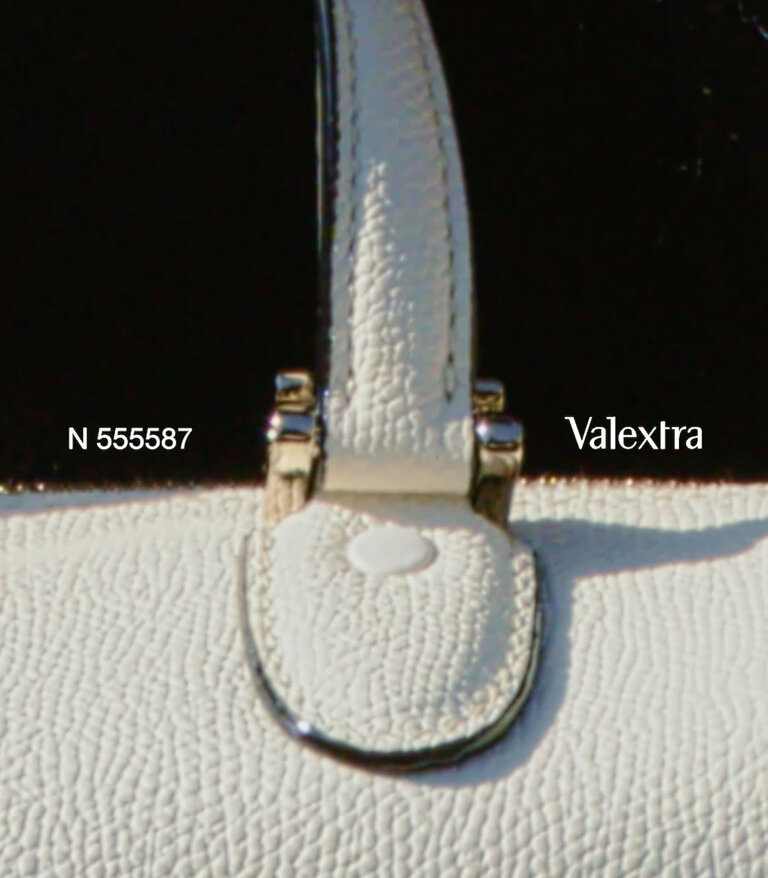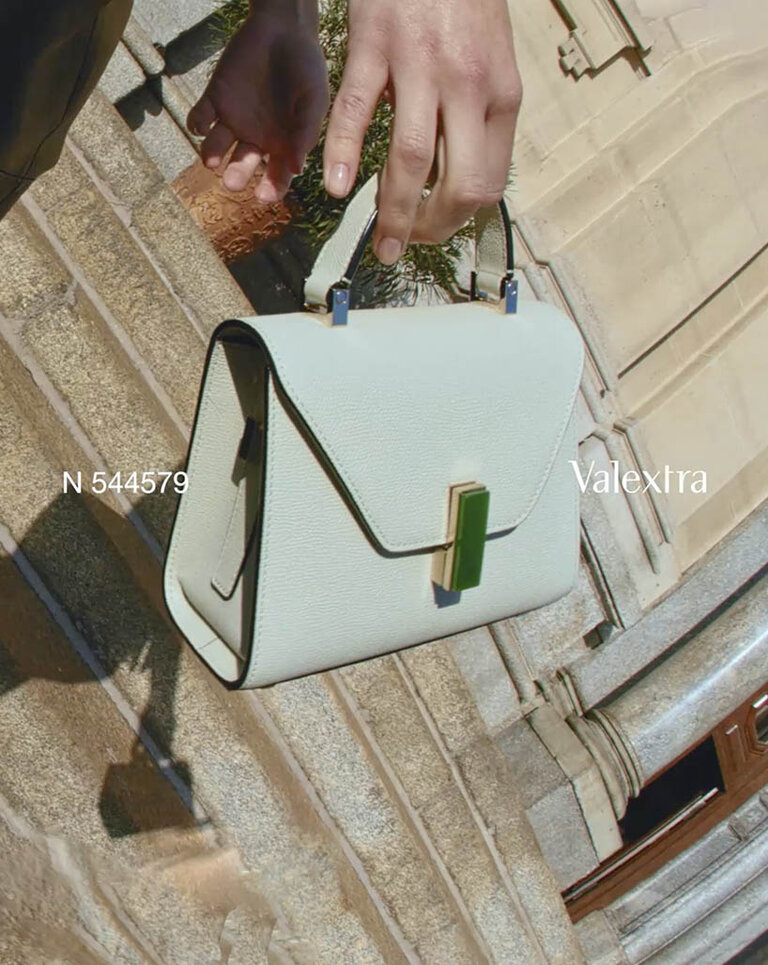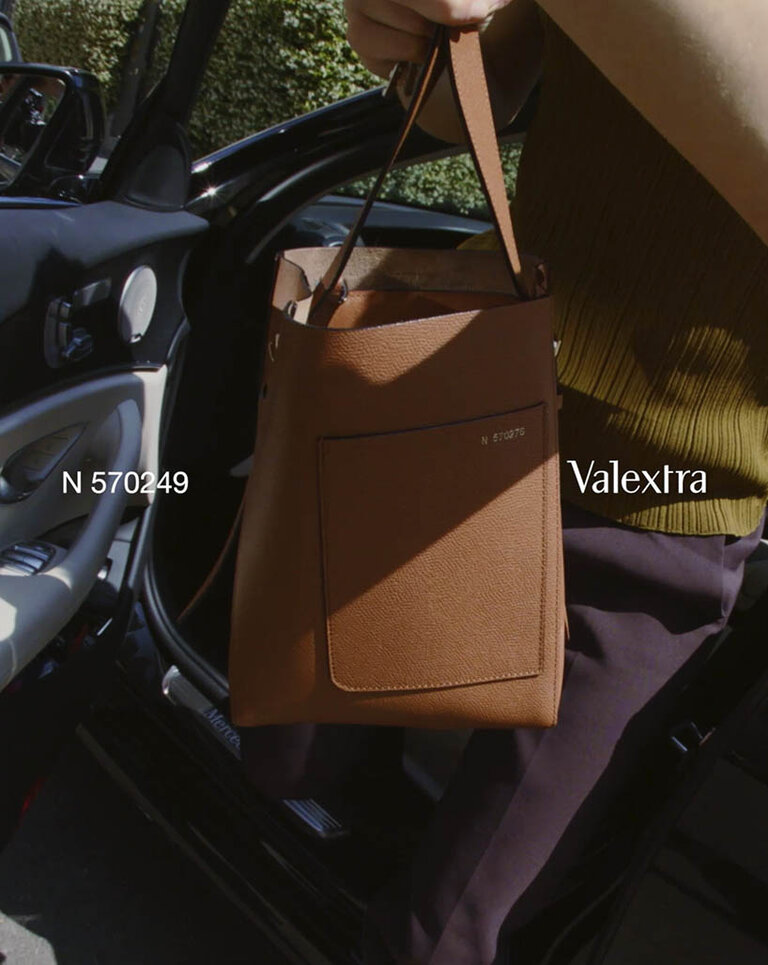

Valextra Meets FAM
Valextra collaborators FAM tell us about capturing the moment, their definition of unique, and embracing the unexpected.

With capturing the fleeting moment as its constant stimulus, who better than Amsterdam-based design studio FAM (Formats and Mechanisms) to collaborate with for our Follow The Bag series set in our hometown of Milan? Capturing the Milanese way of life through the lens of how a Valextra bag is carried, interacted with, and observed, founders Philip Schütte and Mark Prendergast evoke the energy of Milan and its rationalist architecture and attitude. Here, they talk us through their process that searches for nuance in every situation and keeps spontaneity at its core, also known as the defining traits of our city.
Valextra: Buongiorno FAM, we’d love to start by asking you how you define the style of your work?
FAM: We like to break things down into their bare essentials to get an idea about the context and underlying structures of what we’re working with, then build from there in a way that’s engaging with and perhaps provoking that context. Often it’s from a technologically informed place, but we try not to be too techy and rather find nuanced ways to use it to arrive at something somewhat poetic.
V: Can you expand on that process?
Most of it comes from wide ranging experimentation that’s always going on in the background for us. Chance and spontaneity play a big role, walking the tightrope between being very controlled about certain things and being extra vigilant for moments out of our control that surprise us. In that way, we work with the material and process and let it guide. Visually the work is often very precise. We like to try to open new ways to look at things. Also, we’re super interested in the role of attention and how audiences are primed to experience things in certain ways, something we play on a lot.
V: For Follow The Bag that was shot in Milan, your shorts capture the unique journey of a unique bag - what were the key elements you felt it was important to capture?
FAM: We went out on to the streets around our studio in Amsterdam and observed. This often works for us, because it makes something that’s very prone to turn into an abstract version of reality much more grounded.[When] you really look, [bags] play a very distinct role in our activities. When storing your keys after exiting your car, when jogging across the street, when walking your dog getting tangled up in the lead. That was where we started.
V: And how did you make Milan a protagonist in the campaign and how do you feel its synergy complemented the concept?
The beautiful city of Milan provided the sets for each of the scenes in a subtle way. Milan has such a strong identity in terms of light, materials and architecture throughout the city. It really was a pleasure for us to move between the different locations. We wanted to use the variety of settings roughly along the lines of leisure and work activities in the city. Through some of our local friends we scouted, and hopefully found, representative places that speak to each of those themes.
V: In connecting with your audiences, how do you help them look at something familiar through a new lens?
FAM: In the particular case of Follow The Bag, we’re really heavily guiding attention to exactly where we want it to go. But then we introduce all of these rotations which often means you have no sense of where the horizon line is. We like the interplay between hyper-disorientation and intense focus. It kind of genuinely allows you to see the objects in a novel way. We also find it quite funny that we’re able to show the products upside down and in all kinds of strange positions, which we guess would typically be a bit of a no no. Then there’s also something about what we said above about not wanting to be too overproduced, or at least not in the typical way. This leads us often towards quite Brutalist outcomes, following an idea through as far and as honestly as we can, and not adding too many unneeded flourishes.
V: In the current world of hyperbolic content, how important is it to you to convey a sense of innovation and intimacy, as with Follow The Bag?
FAM: We feel a sense of innovation is the result of something you watch or do but ultimately a subjective judgement. We feel we have been lucky in having made things that are deemed innovative, but we feel the intimacy is the more relevant aspect as this is the more fragile component in the sea of content. Social platforms are the big equalisers of content and flatten all types of tonalities, intentions and footages. Intimacy or the idea of feeling seen and given a role - even that of a passive observer - is key in lifting something from the sea of images.

V: How do you personally define “unique” as a word or concept?
FAM: Well, it’s elusive to define, especially now where uniqueness is displayed to such an extent on our media platforms that it has almost entirely lost its meaning and relevance. To us, uniqueness stems from a process. A process of consideration and precision that ensures and imprints the result with ‘uniqueness’, almost like a texture in itself. It’s a process that leads to speaking in a way that is its own and hopefully doesn’t rely on using derivative language.
V: What attracts you to recording a live moment in time?
FAM: That is an interesting question. Maybe it is because of how contentious the notion of ‘real live moment’ has become. Maybe it’s about how, although polished versions of reality are constantly in our media atmosphere, we’ve become less and less familiar with them and possibly even started to despise the mundane. Everything is commodified, even normal live moments. There’s something weird going on, which maybe has been going on since the invention of photography but feels increasingly strange and messy nowadays. Either way, we’re interested in the frisson and like to explore it and add to the ongoing conversation.
V: Can you explain the process - and perhaps complexities - in planning something to look and feel spontaneous?
FAM: [Laughs] Yeah, this is a funny one, because both of us are a little allergic to things becoming too constructed or overproduced. As soon as you go about making something like this there is obviously an inherent lack of realness or spontaneity, as it is a produced version of reality which highlights the product. This being said, there were certain things we chose to do to let the serendipitous moments occur.
V: Interesting, like what?
FAM: We tried to keep the team on the ground very small. We arrived the morning of shoot day to find a much bigger production team than we had anticipated, so we often had to shoo them away or sneak off with the models. This was to make sure the models felt relaxed and we could get some genuine moments with them. And actually, our selection criteria for the models was quite out of the ordinary. We really weren’t looking for anyone who was deep into classic ‘model’ movements, rather someone who we felt seemed like a well-rounded person who could have some fun and bring something easy and human to the scenarios. Oh, and we also made the decision to do everything in one-shots, which meant choosing a single take we felt had something rather than editing together all the good bits!
V: So, when working on a series like Follow The Bag, do you embrace the unexpected or is each frame mapped out beforehand?
FAM: Yes like mentioned above we do indeed embrace the unexpected - we demand it! But we do have clear scenarios beforehand which allow for the unexpected to find its place.
V: Your work takes on a cinematic nature – do you have icons and inspirations you admire?
FAM: Yes, we admire so many different people and makers, of course. This is a peculiar moment for creative workers we feel. We admire anyone that pushes on making and have a particular soft spot for craftsmen. It seems that dedication to skill is somehow losing relevance, but we feel the opposite is true. One of our cinematic icons in this regard has to be [the Swedish filmmaker] Ruben Östlund.
V: What do you hope Follow The Bag will evoke in people when they are presented with it?
FAM: We hope that people can find their own entry point to the clips and are able to enjoy them. This could be the simplicity of the stories, the dog, the sonic atmosphere, the flint of light, the way a simple idea plays out, or the craftsmanship and precision in how they were made – which is ultimately why it is a great match for Valextra.